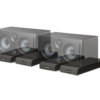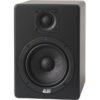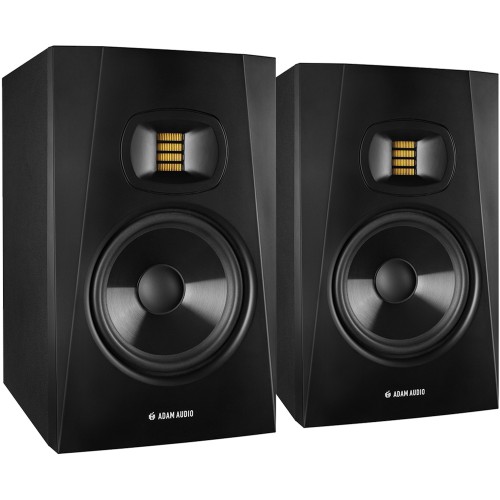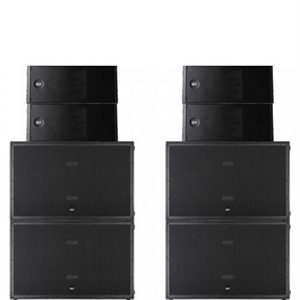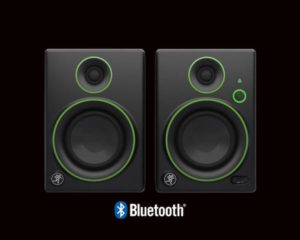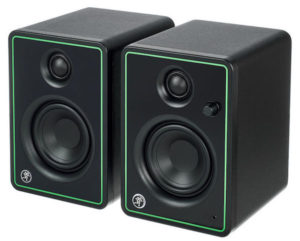- You cannot add "ADAM Audio Sub7 Active Subwoofer" to the cart because the product is out of stock.
ADAM Audio T7V Nearfield Monitors (Pair)
R13,495.00 Incl.
Description
ADAM AUDIO T7V
The T7V is a two-way studio monitor designed for vertical use in a nearfield application.
The T7V features a 7” woofer that provides bass extension down to 39 Hz, while the U-ART tweeter’s diaphragm provides pristine and extended high-frequency response up to 25 kHz – virtually unheard of in monitors in this price range. The U-ART tweeter is fitted to a precision waveguide with the same dispersion-control attributes as the High Frequency Propagation (HPS) waveguide used in ADAM Audio’s flagship S Series studio monitors. The waveguide’s highly uniform dispersion of high frequencies provides an incredibly wide sweet spot that frees you from being glued to a rigid mix position while working.
On the rear side of the T7V’s beveled cabinet, a rear-firing bass reflex port joins a sturdy metal backplate that’s home to the analog input connections. The U-ART tweeter is powered by a 20 W Class-D amp, while a 50 W Class-D amp serves the woofer. These new powerhouses yield an impressive maximum of 110 dB SPL per pair.
The wide frequency response, high dynamic range, excellent transient response, wide sweet spot and small footprints make the T7V perfectly suited for use in small control rooms for music production, video post-production and broadcast production – a great fit for the modest budgets that many facilities need to work with.
STATE OF THE ART TECHNOLOGY
ADAM Audio monitors have earned a worldwide reputation as the preeminent tool for sound engineers based on technological innovations that we’ve established in the field of loudspeaker technology.
U-ART™ HIGH FREQUENCY DRIVER
The U-ART tweeter is fitted to a precision waveguide with the same dispersion-control attributes as the High Frequency Propagation (HPS) waveguide used in ADAM Audio’s flagship S Series studio monitors. The waveguide’s highly uniform dispersion of high frequencies provides an incredibly wide sweet spot that frees you from being glued to a rigid mix position while working.
HPS™ WAVEGUIDE
The HPS (High-frequency Propagation System) waveguide was initially designed at ADAM Audio for the S-ART tweeter of the S Series range with the aid of the latest computer modeling techniques. It hones the dispersion of the speakers to an even, uniform consistency, broad in the horizontal axis but tightly focused in the vertical plane. This minimizes potentially distracting reflections from the horizontal surfaces of significant studio furniture (for example mixing consoles), ensures that imaging remains constant, and creates a large, well-controlled and stable ‘sweet spot’, even at high output levels.
The U-ART tweeter as used in the T Series is fitted to a precision waveguide with the same dispersion-control attributes as the HPS waveguide used in ADAM Audio’s flagship S Series studio monitors.
PWM – PULSE WIDTH MODULATION
In recent years amplifier technology experienced its second big change after going from tubes to transistors some 40 years ago. You can still find semiconductors in this new generation of amplifiers, but the signals to be amplified are treated in a completely new and different way.
PULSE WIDTH MODULATION
PWM (Pulse Width Modulation) – sometimes referred to as Class D amplification, sometimes called Switching Amp Technology – converts the incoming signal to a series of rectangular waveforms of equal height. The width of the rectangles varies in time and the relation of the width of the rectangles represents the musical signal. This waveform can be amplified much more simply, as the transistors are not modulated anymore; instead they are used as switches that only turn the power supply voltage on and off.
It is possible that a very fast mechanical switch could do the job, but power transistors are a better choice for the task, so PWM amplifiers still work pretty much like conventional Class AB designs. It is important to note there are no bits and bytes involved, so “Digital Amplifier” is a misleading and inaccurate term.
ADVANTAGES OF PWM
The main advantage of PWM amplifiers is their extremely high efficiency (>90%). As a consequence the heat to be dissipated is only one fifth of earlier designs, leading to much lower temperatures within the amps and making the use of heat sinks obsolete.
This principle has been known for decades, but time was needed to develop units that perform at the leading edge in sonic reproduction quality and yet still maintain the high efficiency mentioned previously. The ADAM units use the new technology for both the amp and the power supply section (i.e. no more transformers) combined with state of the art input and filter sections to achieve the best in multi-channel active studio monitoring.
TECHNICAL DATA
WOOFER
| Number | 1 |
| Basket Ø | 7″ (178 mm) |
| Cone Material | Polypropylene |
TWEETER
| Number | 1 |
| Type | U-ART |
| Diaphragm Area | 4 inch² (2420 mm²) |
| Equiv. Diaphragm Ø | 1.9″ (48 mm) |
| Velocity Transform Ratio | 4:1 |
| Diaphragm Weight | 0.17 g |
| Waveguide | HPS |
BUILT-IN AMPLIFIERS
| Number | 2 |
| Woofer | 1 |
| Type | PWM |
| Amp. Power RMS | 50 W |
| Tweeter | 1 |
| Type | PWM |
| Amp. Power RMS | 20 W |
CONTROL OPTIONS
| Input Sensitivity | Switchable +4 dBu / -10 dBV |
| Gain | Yes |
| High-Shelf | – 2 dB, 0 dB, +2 dB |
| Low-Shelf | – 2 dB, 0 dB, +2 dB |
INPUT CONNECTORS
| Analog | XLR, RCA |
| Input Impedance | 10 kOhm / 20 kOhm |
GENERAL DATA
| Panel | Rear |
| Frequency Response | 39 Hz – 25 kHz |
| THD > 80 Hz | 0.5 % |
| Max. SPL per pair at 1 m | ≥110 dB |
| Crossover Frequency | 2.6 kHz |
| Max. Power Consumption | 132 W |
| Weight | 15.7 lbs (7.1 kg) |
| Height x Width x Depth | 13.7″ x 8.3″ x 11.5” ( 347 mm x 210 mm x 293 mm) |
| Warranty | 5 years (2 years warranty plus 3 years optional with product registration) |
| Delivery Contents | Power cord, Quick Start Guide |
Additional information
| Weight | 15 kg |
|---|---|
| Dimensions | 70 × 21 × 30 cm |



